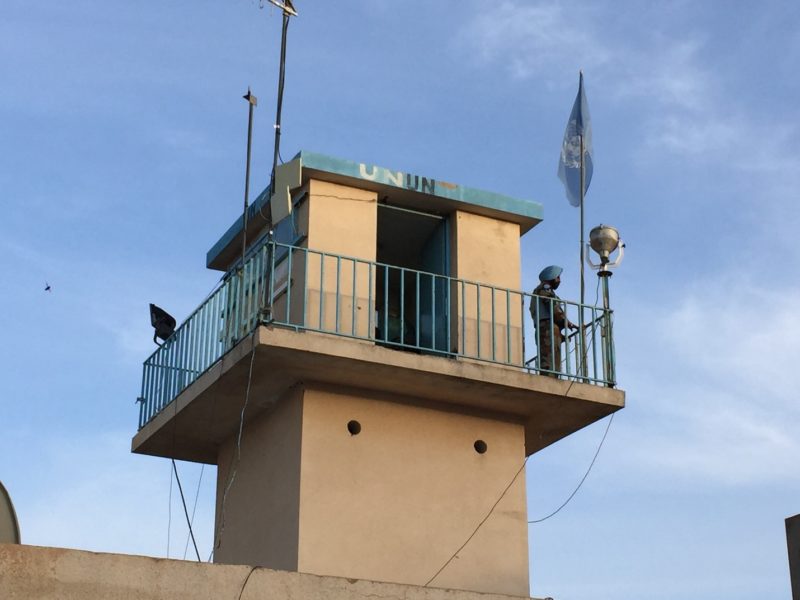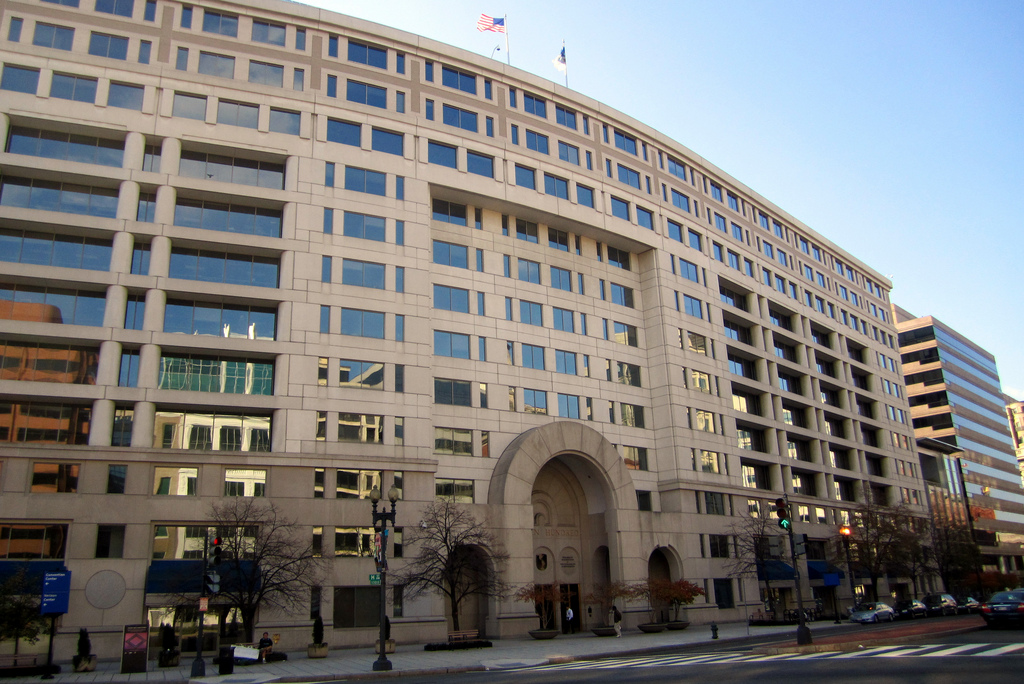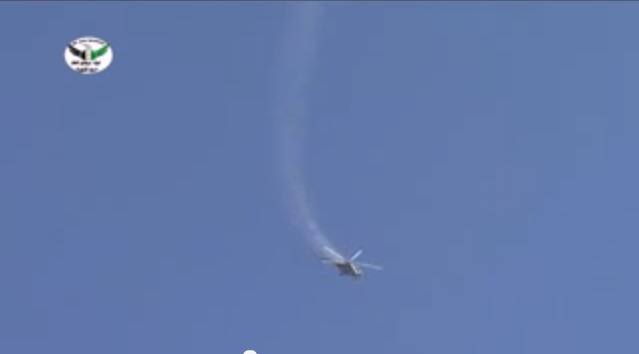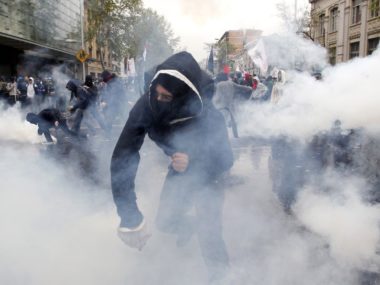
Things are heating up in eastern Democratic Republic of the Congo (DRC). On Tuesday, the rebel group M23 seized the city of Goma, the capital of North Kivu province. They also appear to be advancing on Bukavu, the capital of South Kivu province. If the rebels succeed in taking Bukavu, they will hold the most territory of any rebel group since the Congolese civil war “ended” in 2003.
At first glance, it is surprising that M23 has been able to accomplish this much. The group is only seven months old. The group is estimated to be comprised of 700 former members of the Congolese army that defected over accusations over neglected pay and that the government was not honoring a peace agreement signed with another former rebel group, CNDP, in 2009. Sizing Goma — a city of more than 300,000 people — is a significant milestone for the group. The Congolese army had soldiers in and around Goma, and the United Nations has a significant peacekeeping force located in eastern Congo.
How did 700 soldiers manage to challenge a national army and capture a city of 300,000 people? There are two key parts to the explanation. First, eastern DRC has virtually all of the factors that make areas of the world prone to insurgency. The DRC is huge, and the capital, Kinshasa, is located in the far west of the country, nearly 1,000 miles away from Goma. Congo is very poor with little infrastructure, severely limiting the ability of the government to project power into the countryside. Despite extreme poverty, however, the Kivus are rich in natural resources. The population of North and South Kivu is ethnically divided and includes a relatively large group, the Banyamulenge, that migrated from Rwanda in the late 19th century and are seen as outsiders by much of the rest of the population of the Kivus. Additionally, eastern DRC contains rebels from civil wars in neighboring countries, primarily Rwanda and Uganda.

All of these factors help to explain why insurgency is relatively easy in eastern DRC and why the Kivus have been one of the most conflict-torn parts of the world for decades. But why has M23 in particular been so successful? That brings us to the second part of the explanation — external support. While they deny it, it is virtually certain that Rwanda and Uganda are supporting M23 (see my blog post for a discussion of Rwanda’s involvement in the Congo). External support gives the rebels access to sophisticated weapons and equipment, giving them military superiority over the more poorly equipped and organized Congolese army. The extent of external support is unknown, but it is significant, and in the absence of this support M23 would be unable to accomplish nearly as much as it has.
This Rwandan and Ugandan backed rebellion will not end the way the 1996-1997 one did, with the overthrow of the Congolese government. Seven hundred soldiers are not going to make significant advances toward the capital, and Rwanda and Uganda are not going to project power 1,000 miles from their borders this time. But, the combination of geography, lack of infrastructure, ethnic division, natural resources, and external states willing to meddle beyond their borders mean that, whatever happens to M23, eastern Congo is likely to be conflict-torn for years to come.
Note: A previous version of this post erroneously stated that the group formed on March 23, 2012. The name “M23” refers to March 23, 2009, when a peace agreement was signed between the Congolese government and the rebel group CNDP. The group was formed in April 2012.







6 comments
I’ve already stopped reading in the very first minute! You dont know what you are saying if you dont get simple facts right: M23 is NOT for March 23, 2012; it’s for March 23, 2009 when the accords between DRC Govt and CNDP were signed, integrating CNDP and other rebels into the army and other Congolese civil life and solving their then grievances. The same grievances they have now. If you cant get that, you have no business righting such an article. Stick to Western issues, and save yourself embarrassment!
I agree that external support is very important because it may increase rebels’ prowess and consolidate its leadership. At the same time, I believe that a more scary thing is the extent of support. Rwanda and Uganda can opt to provide arms, money and sanctuary without involving their officers (let’s call this type of patron “reluctant”) or to also put its military commanders into key posts within a rebel movement (let’s call this patron “committed”). The latter may make the rebel movement more effective as the sponsor can utilize its own trained cadres to coordinate and launch attacks against the government. Judging by the report on Rwanda’s and Uganda’s support to M23 (http://www.jambonews.net/en/files/2012/11/DRC-GOE-Final-Report-12-October-12-1-1-1.pdf), it appears that M23 has committed patron(s) which may be problematic for the Kabila government. I’m not sure if he can make even with the external support from France, as his closest ally.
Thanks for commenting on the recent crisis in the Eastern Congo. There are, however, two discrepancies in your post: 1) It seems that the M23 is named after the peace agreement signed in 2009. 2) Estimates on the troop size vary a lot, but the M23 believed to be double the size reported above (~1,200 to 6,000 fighters). Source: http://www.bbc.co.uk/news/world-africa-20438531
M23 is not a reference to their founding date; it’s March 23, 2009, the date of the DRC government’s integration deal with the CNDP. M23’s basic claim justifying its existence is that this agreement wasn’t fully or fairly implemented. While that’s a somewhat dubious interpretation of empirical reality, what really brought this to a head was Kabila’s decision to no longer tolerate the ex-CNDP forces maintaining parallel chains of command within the FARDC.
There are some serious factual errors here. The Banyamulenge are only in South Kivu. Rwandaphones in North Kivu are known as Banyarwanda; their ancestors were made to migrate during the Belgian period to work on plantations in the area.
Goma’s current population is closer to 700.000. M23 force strength as of this week is about 2500-3000, not 700. This is likely due to an influx of Rwandan army soldiers fighting under the M23 banner.
I appreciate the comments. I was wrong about the name M23–It does refer to March 23, 2009, the date of a peace accords signed between a former Congolese rebel group–CNDP–and the Congolese government. M23 was formed in April 2012, approximately seven months ago. I found widely divergent population estimates for Goma and troop estimates for M23 and appreciate the comments on that. The broader point is that, regardless of specific figures, a quite small rebel group has managed to take control of a quite large city and significant amounts of other territory.